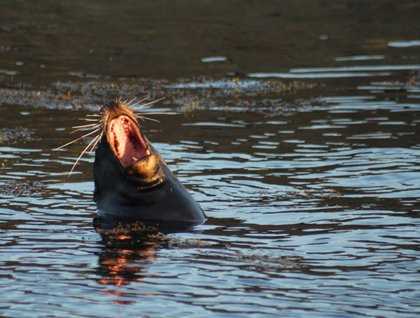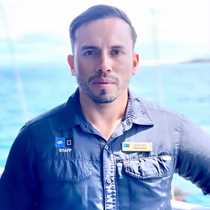We started our day with a pre-breakfast whale watching session trying to encounter some cetaceans along the northern part of Isabela. Many sea birds were seen as well as some Galápagos fur seals (truly sea lions) just coming back from their nocturnal feeding habitats. The titanic volcanoes along the coast of Isabela were just stunning and the geology of this young island was definitely varied.
After breakfast, we crossed the equator and went out on the southern hemisphere on a Zodiac ride, along Punta Vicente Roca, a very productive place of the Galápagos, where an upwelling zone of the Cromwell current is situated. Some Galápagos penguins were seen on the rocks, large marine iguanas basking on the tuff walls, flightless cormorants bringing some nesting materials along the shore. Fur seals were getting some shade under the rock slides off the gigantic cliffs reaching the sky from the shorelines of this island.
Since these are very productive waters rich in marine life, three Zodiacs went out to explore the blue heart of the planet and snorkel with several pacific green sea turtles, Galápagos sea lions, flightless cormorants in the water, and a big variety of fish, some of them cleaning the algae off the sea turtles shells.
During the afternoon we visited the youngest of the Galápagos, Fernandina Island. After a dry landing we disembarked on the only visitor site of this island known as Punta Espinoza. Hundreds of marine iguanas were seen basking on the young black lava fields, while the Galápagos hawk was patrolling the area from the tall white mangrove tress. Along the coast some small colonies of sea lions had established and some flightless cormorants were nesting. As we walked, far in the distance from our trail were able to spot some Bryde’s whales and a male orca behind them heading towards the western side of Fernandina.
After a great sunset, we returned to the National Geographic Islander to continue with our expedition.







